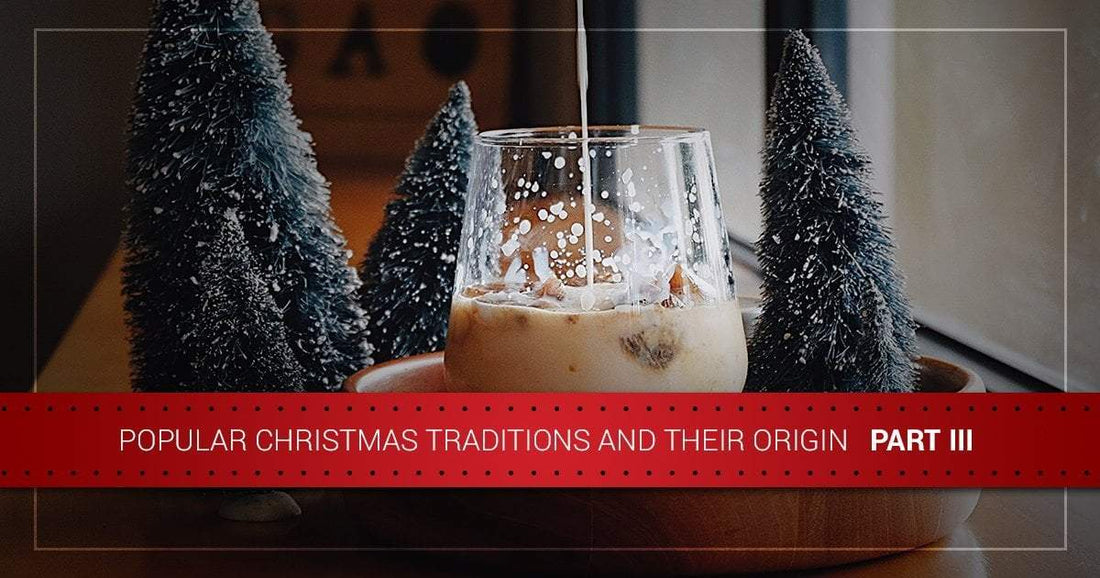
Popular Christmas Traditions and Their Origins — Part III
Share
Every year, you bake cookies for Santa, make homemade eggnog, and decorate your home in red and green, but do you know why? Our ongoing series has taken an in-depth look at some of our most cherished Christmas traditions, so be sure to catch up on parts one and two if you missed them. In today’s post, we’ll continue to explain the fascinating history of your favorite Christmas traditions.
When you’re done reading this post, be sure to head over to The Christmas Light Emporium to shop for LED Christmas lights and everything else you need to spread Christmas cheer around your neighborhood!
Christmas Colors
When you think about Christmas lights and decorations, red and green are probably the two colors that first come to mind. There’s no single event that cemented these two colors into the official Christmas color role, but it’s widely believed that these colors derived their meaning from some of the other traditions we’ve discussed thus far. Mistletoe and fir trees, for instance, were both used in pre-Christmas traditions for hundreds of years. Holly berries represent the blood of Christ, and this may be why the color red was used in conjunction with the green elements that were popular throughout the ages.
Milk and Cookies 
There’s no consensus on which cookies Santa prefers, but at The Christmas Light Emporium, we’re of the belief that Santa doesn’t discriminate when it comes to Christmas delights. You probably have fond memories of leaving a plate of fresh cookies and a cold glass of milk on the table for Santa, and this tradition traces its roots back to Norse mythology and traditions in Northern Europe. According to legend, Odin is a wise and generous deity who would soar across the skies riding his eight-legged horse, Sleipnir. Odin would take the skies during the Winter Solstice and deliver toys, treats, and other gifts to children. Sleipnir is famous for loving tasty treats, and children familiar with the legend would often leave desserts and other delicious snacks for Sleipnir, secretly hoping to find favor with Odin. The Winter Solstice occurs on December 21, and this close proximity to Christmas Day is likely why the myth was assimilated into the Christmas traditions we’re familiar with today!
Eggnog
If you’re like most people, then you were probably grossed out by eggnog before you first tried it (or perhaps you still are!). While this popular Christmas drink is beloved and despised by many, we’re not going to take a position in this post. We will tell you, however, that eggnog is probably an outgrowth of a medieval drink known as “posset.” This drink was a mixture of milk, eggs, figs, and sometimes sherry. Each of these ingredients was expensive in medieval times, so it was almost exclusively drank by the wealthy during times of celebration.
English colonists who brought the recipe with them wanted to replicate the drink, but didn’t have access to figs or sherry. Rum was readily available, and it made for a tasty addition to the milk and eggs. As to where the name itself comes from, it may be derived from the beer known as “noggin” from Norfolk, England.
Snow 
There’s something magical about LED Christmas lights shining brightly through a fresh blanket of snow, but why do we associate Christmas with cold temperatures and snowy conditions? Like many of the traditions we’ve examined, the origins begin in Victorian England. London was quite frigid from 1550 to 1850, with a great deal of snowfall occurring during the Christmas season. You’ve surely seen A Christmas Carol on television, but the original book was written in 1843 by none other than Charles Dickens. Inspired by the heavy Christmas snowfall he experienced during his childhood, he wove themes of snow and ice into the story. The story became incredibly popular in the United Kingdom and eventually, in the United States.
The association of Christmas and snow was also popularized by Bing Crosby’s “I’m Dreaming of a White Christmas.” This famous Christmas song was first recorded in 1942, and it has now sold more than 100 million copies!
Stay tuned for future posts in which we’ll continue to explore the interesting history of Christmas traditions. Christmas will be here before you know it, so take advantage of our low prices on LED Christmas lights and other decorations before the big day is here!















